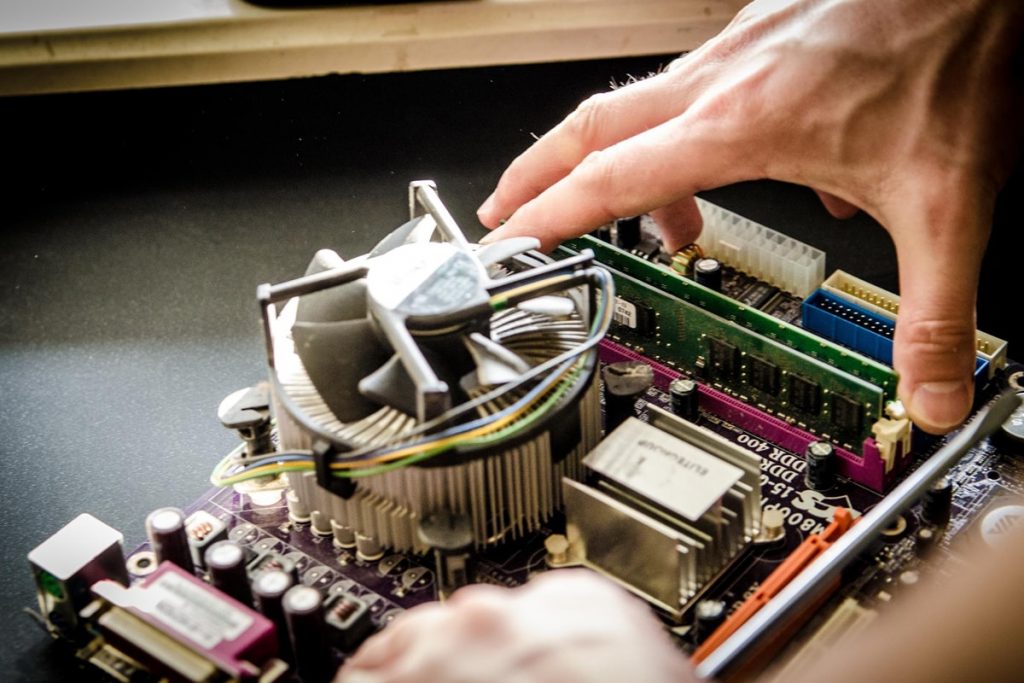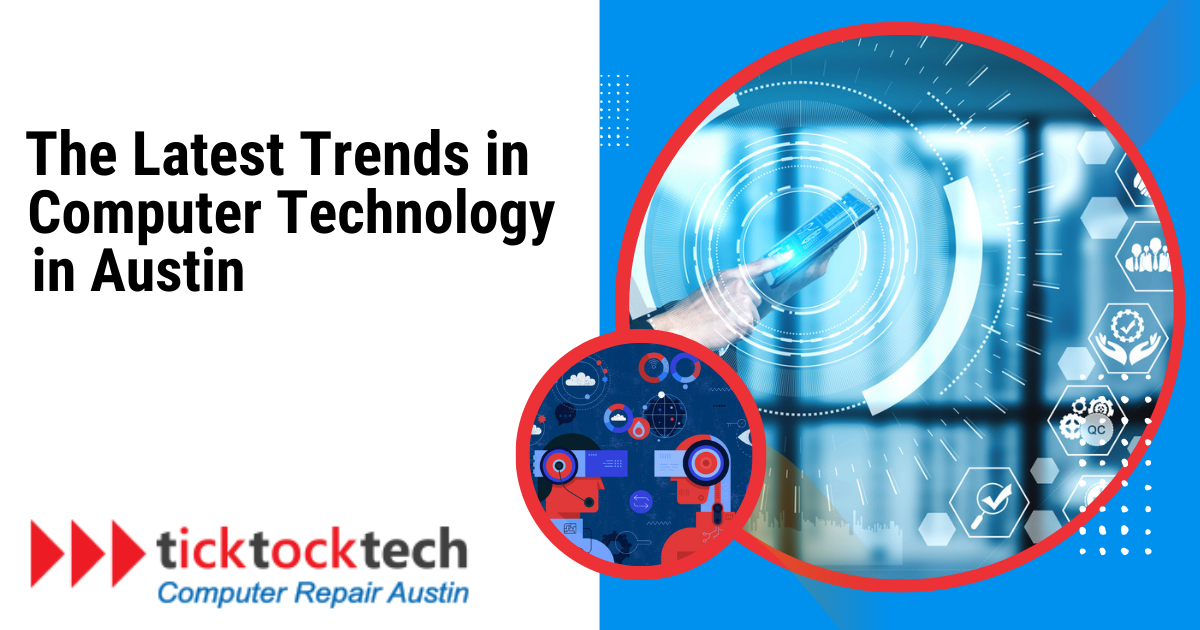Technology is prone to improvements just like every other development. Year after year, we have important updates in technology. All with one goal of making things easier for humans. The computer started just like most technology, but new form trends and improvements comes out into usage. Current problems are frequently addressed by new technological trends, resulting in breakthroughs that can benefit markets, organizations, and people. They encourage economic expansion, open up job possibilities, and increase market competition. Additionally, they improve connectivity, communication, and information access, furthering global connectedness and fostering international cooperation. Adopting new technological trends may boost output, make things more convenient, and improve user experiences. Let’s have a look at the latest computer technology trends in 2023.
1. Cloud Computing
Users may now access and use computer resources via the internet because of the revolutionary technology known as cloud computing. Cloud computing provides on-demand access to a pool of shared resources, such as storage, servers, databases, and applications, as opposed to only depending on local hardware and software.
The scalability and flexibility of cloud computing are its main benefits. Users may simply adjust their resource use to meet their demands and only pay for what they use. As a result, firms no longer need to make large upfront infrastructure expenditures and may react swiftly to shifting customer demands.
Related: How to be a Cloud Engineer
Additionally, cloud computing offers constant access to data and apps from any location with an internet connection, facilitating teamwork, remote work, and increased productivity. Additionally, it provides centralized data backup and storage, lowering the likelihood of data loss and boosting data security.
2. Artificial Intelligence
Artificial intelligence (AI) is a fast-developing area of computer science that is concerned with building intelligent machines capable of inference, learning, and decision-making. AI systems analyze enormous volumes of data, spot patterns, and modify their behavior to mimic human intelligence.
There are several uses for AI in numerous fields and spheres. Among other things, it drives autonomous vehicles, voice assistants, and systems for picture identification and recommendation. AI systems can comprehend complicated data, complete jobs quickly and accurately, and even mimic human speech.
See Also: Artificial intelligence – what you need to know
The potential of AI resides in its capacity for work automation, increased productivity, and wise prediction. AI technology promises that it will disrupt industries, improve healthcare, revolutionize transportation, and change how people live.
3. Virtual Reality
An innovative new technology called virtual reality (VR) submerges viewers in a computer-generated, simulated environment. In a virtual world where they may interact with items and feel realistic feelings, users are transported by donning a VR headset. Recent developments in VR technology provide very realistic and compelling experiences in a variety of businesses. The most common public usage of VR technology is the Oculus Quest VR and the upcoming Apple Vision.
VR allows users to enter virtual worlds for entertainment purposes, whether they want to explore fantastical landscapes, enjoy thrilling video games, or view movies in an immersive setting. With its ability to deliver engaging and lifelike simulations for learning difficult ideas or honing specific skills, virtual reality also has a lot of potential in industries like education and training.
Additionally, VR has uses in architecture, tourism, healthcare, and other fields. It allows for treatment for mental health issues as well as virtual tours of actual places. Realistic medical simulations are also made possible.
4. Augmented Reality
The innovative technology known as augmented reality (AR) improves our sense of vision and engagement with the environment by fusing the actual world with virtual aspects. Through gadgets like smartphones, smart glasses, or headsets, AR offers immersive and engaging experiences by superimposing digital information over the real environment.
By incorporating virtual items and characters into our environment, augmented reality (AR) improves gaming experiences by fostering more engaging and immersive gameplay. The ability of Augmented Reality will be available to the public when Apple releases its Vision PRO device.

Don’t miss: Apple Vision Pro – Everything we know so far
Numerous industries, including gaming, education, healthcare, retail, and design, have used augmented reality. It is helpful for product visualization, architectural modeling, and training simulations because it allows users to see and interact with virtual items in actual environments. Additionally, AR provides interactive instructional information, enabling kids to learn about many topics in fun and interesting ways.
5. Internet of Things
The Internet of Things (IoT) is a computer technology concept that is quickly gaining popularity. It describes a network of commonplace items that are equipped with connections, software, and sensors to gather and share data. IoT gadgets include infrastructure, wearables, industrial sensors, and smart home gadgets.
This technology transforms how we communicate with and interact with our environment by introducing connection and automation to many areas of our life. It provides a host of advantages, including greater productivity, convenience, and efficiency. Real-time data analysis, predictive maintenance, and remote monitoring are made possible by IoT technology, which results in improved operations.
Related: Smart Home Technology and How they work
The Internet of Things (IoT) is revolutionizing a variety of sectors, from linked healthcare gadgets that monitor patient well-being to smart homes that automate jobs and offer energy efficiency. It has the potential to build better industries, communities, and transportation systems, among other things.
6. Quantum Computing
The area of quantum computing is still in its infancy, yet it has the potential to fundamentally alter the computer industry. Quantum computers employ the concepts of quantum physics to operate using quantum bits, or qubits, as opposed to conventional computers, which use bits to encode information as 0s or 1s. This enables quantum computers to carry out calculations at a size and speed that are both unparalleled.
Complex issues that are beyond the capabilities of conventional computers can be solved using quantum computing. It has potential in fields including drug development, climate modeling, optimization, and cryptography. Quantum computing has the potential to transform companies, speed up scientific advancements, and foster creativity in a variety of sectors.
Quantum computing research and development are still in their early phases, but they are moving along quickly. To fully utilize the capabilities of quantum computing, researchers and tech businesses are investing in improving hardware, software, and algorithms.
7. Edge computing
With the aid of cutting-edge technology, processing, and data storage may now be done closer to the point where data is generated. It improves real-time reaction by reducing latency and processing data locally, close to the devices or sensors. Applications like autonomous systems, Internet of Things (IoT) gadgets, and remote monitoring benefit greatly from edge computing since they demand quick data analysis.
Faster decision-making, more effectiveness, and less reliance on cloud resources are all made possible. Edge computing enables businesses to make use of the capabilities of distributed computing, manage massive volumes of data locally, and generate insights more quickly. It is an essential part of the development of technology, enabling innovations like driverless vehicles, smart cities, and real-time industrial processes.
8. Cybersecurity
Cybersecurity is essential for shielding people, businesses, and systems against online dangers and assaults in today’s linked world. It includes a variety of steps and procedures meant to protect private data, sensitive information, and digital infrastructure.
Cybersecurity has become a major worry due to the sophistication and frequency of cyberattacks that are on the rise. To avoid unauthorized access, data breaches, and other harmful actions, it entails putting in place strong security mechanisms like firewalls, encryption, and intrusion detection systems.
You can promptly detect and reduce possible threats, cybersecurity by constant monitoring, threat intelligence, and incident response. To keep ahead of changing threats and weaknesses, proactive action is necessary.
Conclusions
In conclusion, cloud computing, AI, VR, AR, IoT, quantum computing, edge computing, and cybersecurity are among the newest developments in computer technology for 2023. Flexible resource access, automation, immersive experiences, connectedness, quicker problem-solving, and improved security are just a few advantages offered by these developments.
Remote work and collaboration are made possible by cloud computing, and productivity is increased across all sectors by AI. Immersive entertainment and teaching opportunities are provided by VR and AR. Efficiency and real-time data processing are improved with IoT. Complex issue solving has promise thanks to quantum computing. Faster decision-making is made possible by edge computing at data sources. Last but not least, cybersecurity guards against online dangers. Adopting these trends may promote global connection and collaboration while improving convenience, productivity, and user experiences.

